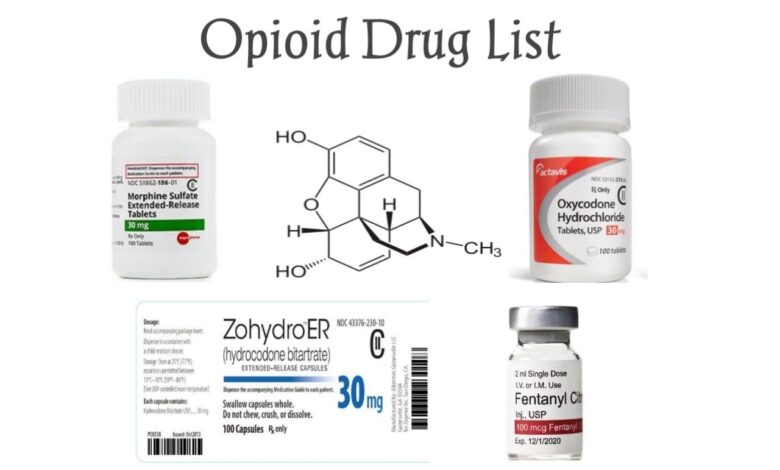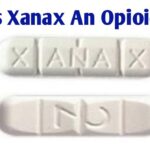Opioid Drugs List

Opioids refer to a class of drugs naturally found in the opium poppy plant and that work in the brain to produce a variety of effects, including the relief of pain with many of these drugs. Opioids can be prescription medications often referred to as painkillers, or they can be so-called street drugs, such as heroin.
Many prescription opioids are used to block pain signals between the brain and the body and are typically prescribed to treat moderate to severe pain. In addition to controlling pain, opioids can make some people feel relaxed, happy, or “high,” and can be addictive.
All opioids are chemically related and interact with opioid receptors on nerve cells in the body and brain. Opioid pain relievers are generally safe when taken for a short time and as prescribed by a doctor, but because they produce euphoria in addition to pain relief, they can be misused (taken in a different way or a larger quantity than prescribed, or taken without a doctor’s prescription). Regular use—even as prescribed by a doctor—can lead to dependence and, when misused, opioid pain relievers can lead to addiction, overdose incidents, and deaths.
The United States is in the midst of an opioid epidemic. The American Society of Addiction Medicine (ASAM) indicates that close to 3 million people battled opioid addiction (to either heroin or prescription painkillers) in 2015. More than 60 percent of the record-high overdose deaths in 2015 involved an opioid drug, and 91 people in the US die from an opioid overdose daily, the Centers for Disease Control and Prevention (CDC) reports. Also in 2015, roughly 300 million prescriptions were dispensed for narcotic pain medications around the world, and Americans consumed 80 percent of them.
Opioid Drugs List
The list of opioids or narcotic drugs includes:
- Hydromorphone (Dilaudid)
- Oxycodone (OxyContin, Roxicodone)
- Oxycodone and acetaminophen (Percocet, Roxicet)
- Tapentadol (Nucynta)
- Tramadol (Ultram)
- Buprenorphine (Belbuca)
- Fentanyl (Duragesic)
- Morphine (MS Contin)
- Hydrocodone (Hysingla, Zohydro ER)
- Hydrocodone/acetaminophen (Lorcet, Lortab, Norco, Vicodin)
- Oxymorphone (Opana)
- Tapentadol (Nucynta)
- Meperidine (Demerol)
- Butorphanol (Stadol)
- Methadone (Methadose)
- Nalbuphine (Nubain)
- Propoxyphene (Darvon)
- Pentazocine (Talwin)
- Meperidine (Meperitab)
- Levorphanol (Levo-Dromoran)
- Remifentanil (Ultiva)
- Alfentanil (Alfenta)
- Oliceridine (Olynvik)
How opioids affect you
There is no safe level of drug use. The use of any drug always carries some risk. It’s important to be careful when taking any type of drug.
Opioids affect everyone differently, based on:
• the person’s size, weight, and health
• whether the person is used to taking it
• whether other drugs are taken around the same time
• the amount taken
• the strength of the drug.
Generally, people who use opioids may experience the following:
• extreme relaxation
• drowsiness and clumsiness
• confusion, slurred speech,
• slow breathing and heartbeat.
If a large dose is consumed, someone may develop:
• cold, clammy skin
• slow breathing
• blue lips and fingertips
• falling asleep (‘going on the nod’)
• death by respiratory depression.
Long-term effects include:
• increased tolerance
• constipation
• dependence
• damage to vital organs such as the lungs, brain, and heart.





